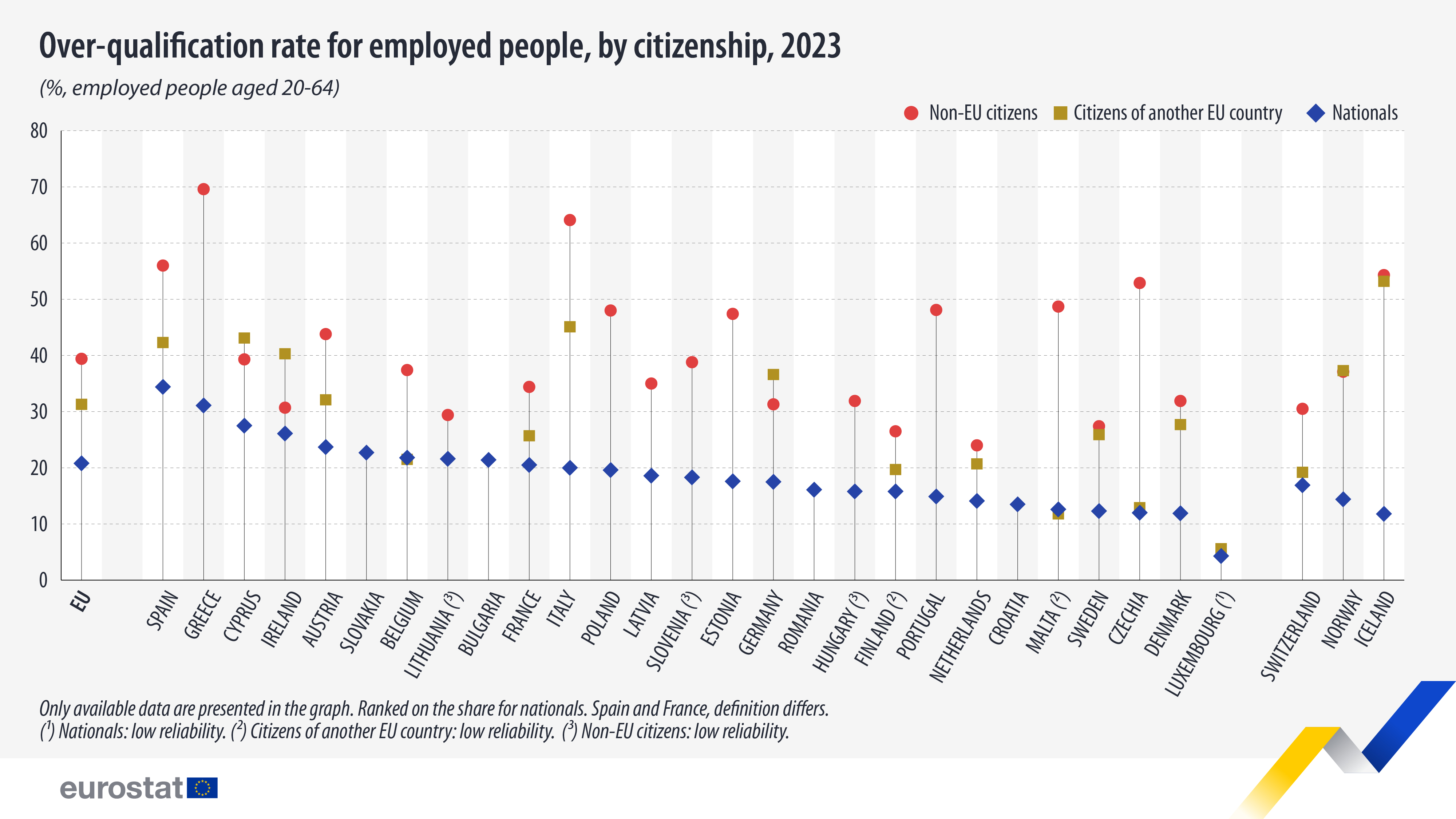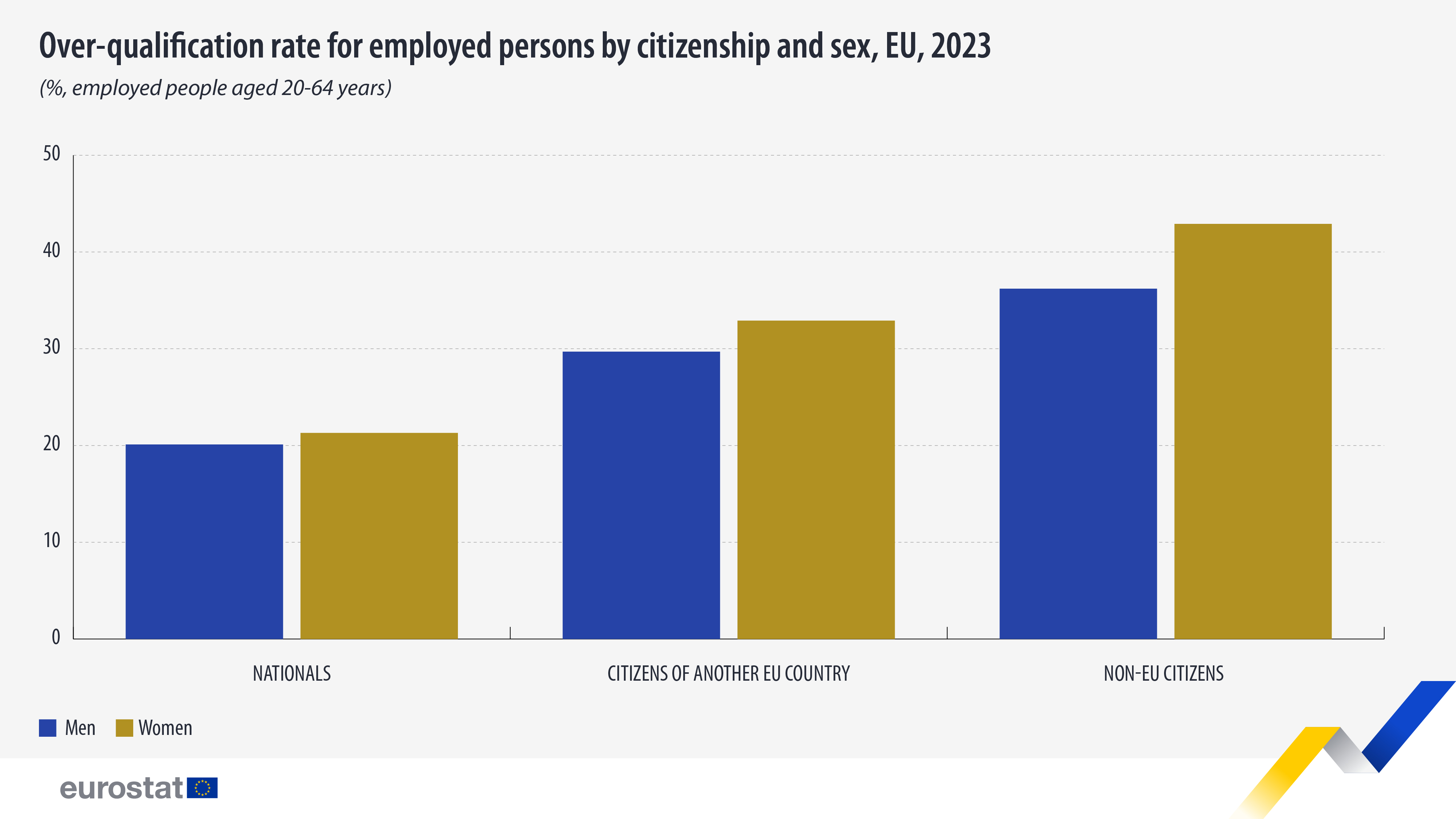Almost 40% of non-EU citizens over-qualified in 2023

In 2023, employed non-EU citizens in the EU were almost twice as likely to be over-qualified than nationals for their job. The over-qualification rate was 39.4% for non-EU citizens (0.1 percentage points (pp) lower than in 2022) and 31.3% for citizens of other EU countries (-0.3 pp). By contrast, the over-qualification rate for nationals stood at 20.8%, 0.3 pp less than in the previous year.
Among the EU countries, in 2023, the highest share of over-qualified non-EU citizens was recorded in Greece (69.6%), Italy (64.1%) and Spain (56.0%).
For citizens of other EU countries, the highest shares of over-qualified workers were recorded in Italy (45.1%), followed by Cyprus (43.1%) and Spain (42.3%).

Source dataset: lfsa_eoqgan
Larger gender gap for non-nationals
Looking at the over-qualification rates by sex, data shows that women represent higher over-qualification rates than men.
In 2023, the over-qualification rate among female non-EU citizens was 6.7 pp higher than the rate for male non-EU citizens. It was likewise 3.2 pp higher for citizens of other EU countries. For nationals, the rate for women was 1.2 pp higher than for men.

Source dataset: lfsa_eoqgan
For more information
- Statistics Explained article on migrant integration statistics – over-qualification
- Thematic section on migrant integration
- Database on migrant integration
Methodological notes
The over-qualification rate is calculated for employed persons with a tertiary level of education attainment (international standard classification of education (ISCED) levels 5–8). The rate shows what proportion of these people are employed in a low- or medium-skilled occupation (international standard classification of occupations (ISCO) major groups 4–9).
If you have any queries, please visit our contact us page.
